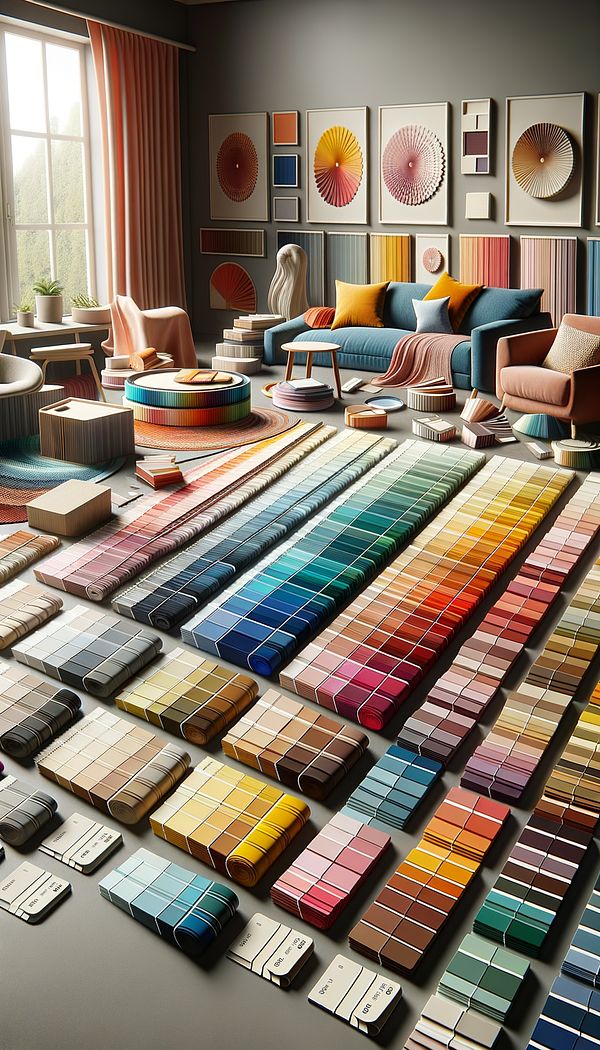What is a Color Scheme?
A color scheme is an intentional selection of colors used in design for aesthetics and practical purposes.
Description
A color scheme is the choice of colors used in design for a range of applications to serve both aesthetic and functional purposes. It involves the selection and application of colors based on their color relationships and how they interact with each other. The goal is often to create a particular look, evoke certain emotions, or convey a specific theme or atmosphere within a space. Color schemes are fundamental to the field of interior design, as they can dramatically affect the mood and perception of an interior space.
Color schemes are typically derived from the color wheel, utilizing various color combinations such as complementary, analogous, triadic, and monochromatic. Each of these combinations has its own set of rules about how colors can be matched and mixed to achieve harmony and balance within a design. Understanding the color wheel and color theory is essential for creating effective color schemes.
Choosing the right color scheme can transform a room from dull to dynamic, influencing the occupants' psychological and physiological responses. It can make a room feel warmer or cooler, alter the perception of space size, and highlight architectural details or camouflage defects.
Usage
In a residential living room, a designer might select a warm, earthy color scheme to create a cozy and inviting atmosphere. In contrast, for a home office, a cooler, neutral color scheme might be chosen to promote focus and efficiency. Additionally, color schemes play a crucial role in branding and marketing, as they can strongly influence consumer behavior and perceptions.
FAQs
-
How do I choose a color scheme for my space?
Consider the intended atmosphere and functions of the space, the lighting, architectural details, and existing furnishings. Experiment with color palettes that reflect the desired mood and complement the space’s characteristics.
-
Can a color scheme impact the perceived size of a room?
Yes, color schemes can influence the perceived size and shape of a room. Light colors can make a room feel more spacious, while dark colors tend to make it feel cozier and smaller.
-
Is it possible to mix different color schemes in one space?
Yes, mixing different color schemes can be done effectively, but it requires a careful balance to maintain harmony in the space. It's crucial to ensure that the schemes complement rather than clash with each other.
-
Do color schemes go out of style?
Trends in color schemes can change over time, similar to fashion trends. However, choosing a color scheme should be more about personal taste and the intended atmosphere rather than strictly following current trends.
-
How important is lighting in choosing a color scheme?
Lighting is crucial in choosing a color scheme as it can significantly affect how colors appear in a space. Natural and artificial light can change the perception of colors, so it’s essential to consider the lighting conditions of the room.
Practical Application
When applying a color scheme, start with a primary color that will serve as the foundation. Then, select secondary and accent colors to complement or contrast, depending on the desired effect. Utilize swatches and samples to test combinations in the actual space, considering both natural and artificial lighting. Remember, the right color scheme can unify a design and create the perfect ambiance for your space.
-
Lighting111 articles
-
Space Planning & Layout134 articles
-
Decorating Principles & Elements330 articles
-
Wall & Ceiling Treatments35 articles
-
Color & Patterns154 articles
-
Open PlanOpen plan refers to a floor layout without walls or barriers between different living spaces.
-
BrocadeBrocade is a rich, decorative fabric often woven with a raised pattern.
-
VelvetVelvet is a luxurious fabric known for its soft, dense pile and distinctive sheen.
-
OmbreOmbre is a design technique featuring a gradual blending of one color hue to another, usually moving tints and shades from light to dark.
-
HierarchyHierarchy in interior design refers to the deliberate organization of elements in a space to signify their importance.
